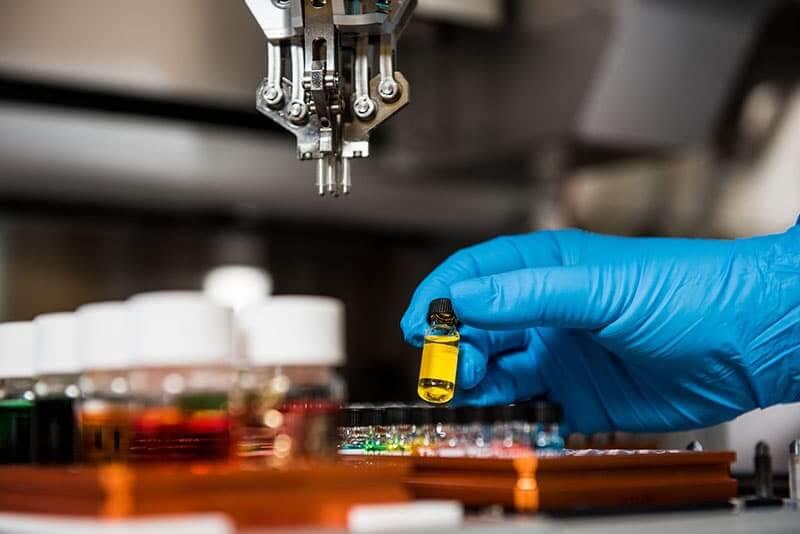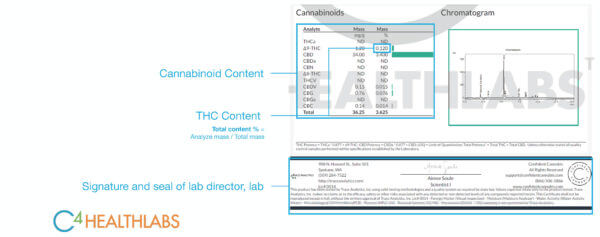As a CBD consumer, the responsibility to be informed of the products you purchase is yours. While regulatory agencies continue to iron out requirements for CBD products [view our response to the 2019 FDA warnings], C4 Healthlabs is dedicated to helping you understand why third-party testing is so important and what to look for in the results. Understanding how to read CBD lab tests, or certificates of analyses (COAs), is important for those who want to be sure of product purity, profile and potency.
For the hemp industry, detailed information about the CBD products you are buying is contained in lab tests. Reputable brands that carry CBD products ensure testing comes from third-party labs, free of influence from the manufacturer. Further, it is important that these labs are certified within their fields, serving as authorities in their industry and trustworthy sources of data. Below you will find information on how to read CBD lab tests, what to look for in a lab test, as well as how to ensure the lab accepts accountability within the process.
Hemp Oil Lab Tests Ensure Potency and Purity
Testing for Potency/Strength
Whether a CBD product claims cannabidiol content by bottle or “dose,” a lab test will confirm the product’s concentration. (Certain brands label their CBD concentration by “dose,” which amounts to 1mL of product.)
The cannabinoid report should list every cannabinoid detected, as well as the amount found in the product. This is also where you will find information about the total THC content of the product. CBD products made of industrial hemp should show THC content of less than or equal to 0.3%. Broad spectrum and isolate products should show 0% THC.
Lab Tests Show Contaminants
Because regulation in the CBD market remains gray, farming, importing and manufacturing practices are widely varied. Therefore, any number of contaminants can make their way into hemp oil products, including pesticides, herbicides and micro-biocides. Lab testing allows the consumer to discover whether the end product contains any of these harmful contaminants.
Types of contaminants include:
- Chemicals such as pesticides
- Microbials such as mold, mildew and fungus
- Heavy metals such as lead or mercury from soil absorption
C4 Healthlabs worked with its farm to obtain third-party lab tests that analyzed the soil, water and raw crop materials. All tests showed ZERO contaminants.
How to Read CBD Lab Tests
At the top of the document, information identifying the product, batch number, and company who manufactured the product should be available – as well as contact information. Also at the top, laboratory information should be available.
The cannabinoid report should list every cannabinoid detected, as well as the amount found in the product. This is also where you will find information about the total THC content of the product. CBD products made of industrial hemp should contain THC content of less than or equal to 0.3%. Broad spectrum and isolate products should show 0% THC.
Third-Party Lab Tests Give You Power in Knowledge
A certificate of analysis is potentially the single most important document related to the purchase of CBD products for informed consumers. Knowing how to read CBD lab tests gives you the power to understand your product’s purity. Our hemp farmers practice organic farming techniques and our extraction and distillation methods ensure product purity. We pride ourselves on our production transparency and encourage you to ask for our Certificates of Analysis with your products. If you have not yet done so, please reach out. If you would like assistance reviewing the results, just let us know. We are happy to help you be in full control of your wellness.




